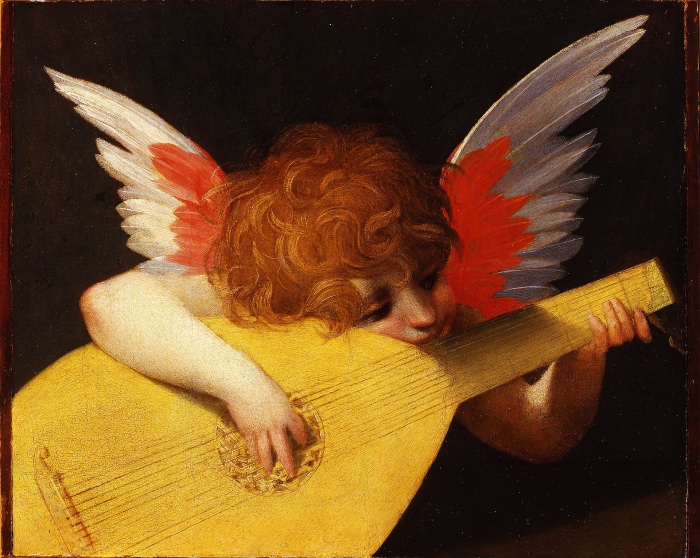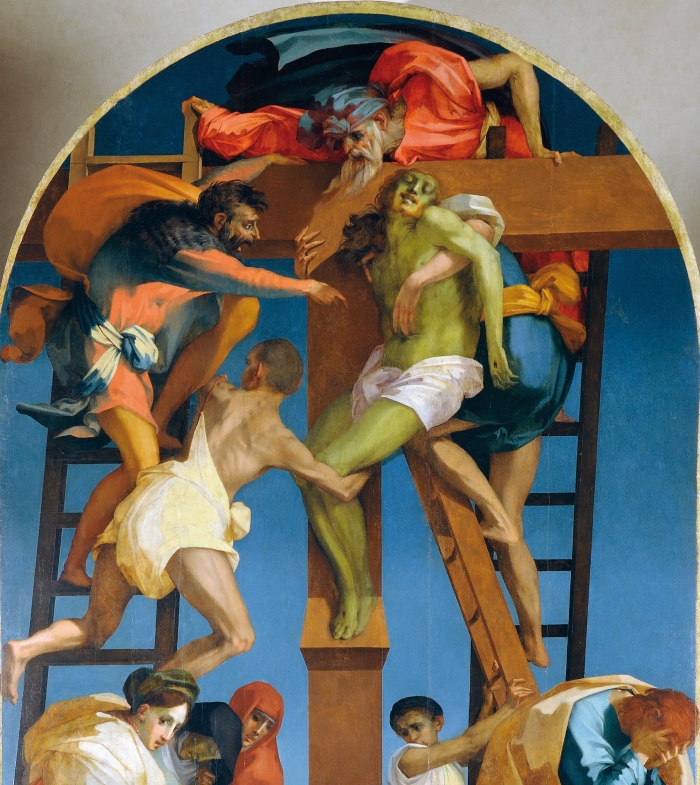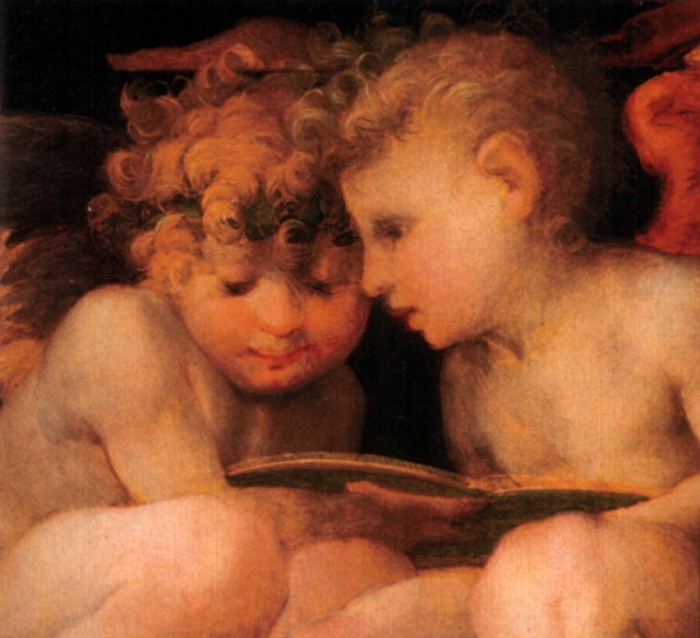
Rosso Fiorentino, Putto che suona
Have you ever asked who was the artist who, along with Pontormo, revolutionized the world of Renaissance art in Florence?
In this post we will explore together the life the works of Rosso Fiorentino, one of the most emblematic figures of early Mannerism in Florence.
Famous for his unusual and revolutionary art, Rosso Fiorentino (Giovanni Battista di Jacopo) left an indelible mark on the artistic landscape by proposing an aesthetic outside the traditional mold.
Here is how this painter, who was born in Florence in 1495 and died in Fontainebleau in 1540, influenced the course of Italian art and beyond.
Rosso Fiorentino: the visionary of Mannerism

Rosso Fiorentino, Deposizione di Volterra (1521)
Rosso Fiorentino, along with Pontormo, famous for the Visitation, is considered a pillar of early Florentine Mannerism. Both pupils of Andrea del Sarto, these artists offered an innovative pictorial vision, characterized by grotesque elements and bewildered gazes, symbols of an era experiencing momentous changes.
Reality in Rosso Fiorentino’s works is transformed into an alienated representation, far from the harmony and balance typical of the Renaissance.
FLORENTINE RED, REBELLIOUS AND INNOVATIVE ARTIST
Fiorentino, nicknamed so because of the color of his hair, was an artist of original rebellious ideas. Giorgio Vasari in his “Lives” describes him as a painter intolerant of the conventions of the time, following only a few select masters, including Andrea del Sarto and Michelangelo Buonarroti.
His personal style his restless nature led him to break with traditional rules, offering a unique artistic vision outside the canons.
Thanks to his leading role in art, Rosso Fiorentino left a deep mark on history, influencing numerous artists of later centuries, including Giulio Romano and Carlo Portelli.
BIRTH OF A MASTER
Born in Florence in 1494, Rosso Fiorentino trained artistically under Andrea del Sarto.
His first major work, the fresco of the Assumption in Florence’s Santissima Annunziata, already demonstrates his precocious talent and penchant for an innovative style.
Rosso Fiorentino quickly established himself on the artistic scene, participating in prestigious commissions such as the settings for festivities in honor of Pope Leo X and joining the Arte dei Medici e degli Speziali.
His works reveal a stylistic shift toward Mannerism, with expressive figures, bright colors and a strong tendency to break with traditional harmony. Inevitably marking the characteristics and Art in the sixteenth century.
THE SUCCESS OF ROSSO FIORENTINO
During his career, Rosso Fiorentino traveled to several cities, including Piombino, Volterra and Rome, leaving evidence of his talent with extraordinary works.
His experiences, including the traumatic Sacco di Roma, are reflected in his works, which are charged with emotional intensity and drama.
FRANCE AND THE LAST CREATIVE PHASE
The last period of Rosso Fiorentino’s life took place in France, where he became court painter to Francis I. There he produced important works such as the frescoes in Francis I’s gallery in the Château de Fontainebleau and the Pieta, preserved in the Louvre.
His style, already distinctive, reached new and high heights of expression and originality.

Pala dello Spedalingo di Rosso Fiorentino (dettaglio).
Despite his short life, Rosso Fiorentino died at only 46, he left behind an impressive collection of works, many of which are preserved in Italy, particularly in Florence and Volterra.
His works also can be seen in several international collections, a testament to the influence of the value of his artistic contribution.
Rosso Fiorentino is a key figure in the history of Italian art, a pioneer of Mannerism who was able to transform his restless creative spirit into extraordinary works of art. His legacy continues to influence inspire art-loving artists around the world.

